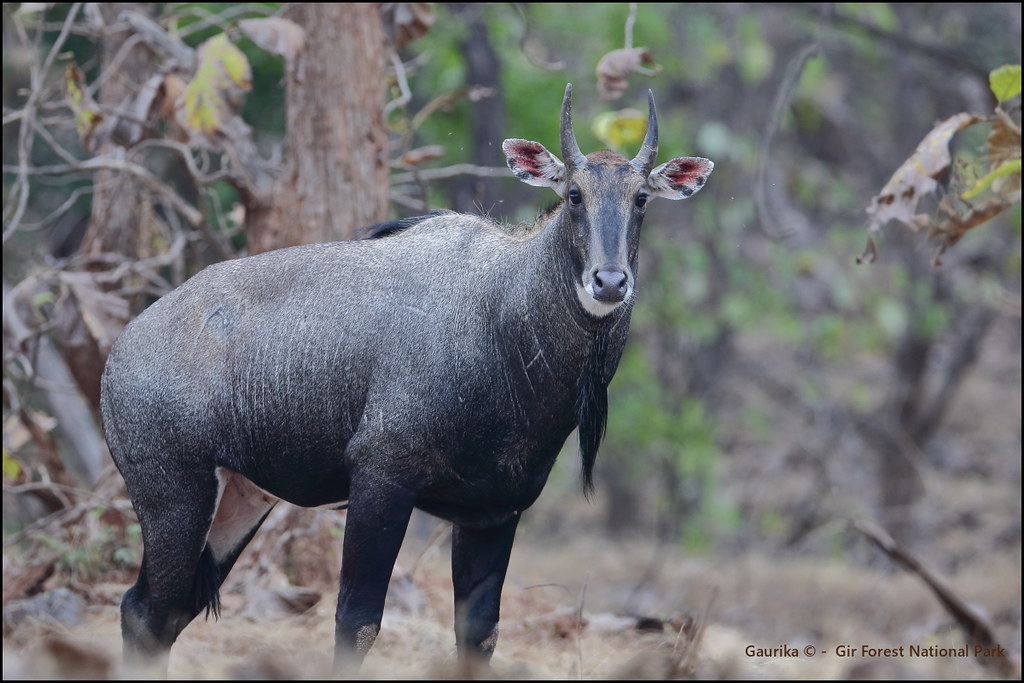Gir National Park: Nestled in the western state of Gujarat, Gir National Park stands as a testament to successful conservation efforts and the preservation of an iconic species—the Asiatic lion. Renowned for being the last bastion of the Asiatic lion, Gir National Park is not only a haven for wildlife enthusiasts but also a symbol of the triumph of conservation initiatives in the Indian subcontinent.
“Embark on a thrilling safari adventure at Gir National Park, the last abode of the Asiatic lion, situated in Gujarat, India. Spread across rugged terrain and teak forests, this wildlife sanctuary is a haven for biodiversity, showcasing a vibrant ecosystem. Explore the diverse flora and fauna, with a chance to spot the majestic Asiatic lions, leopards, and a myriad of bird species. Gir National Park offers nature enthusiasts and wildlife lovers an unparalleled opportunity to witness these magnificent creatures in their natural habitat. Plan your visit for an unforgettable journey into the heart of India’s conservation success story.”
Historical Significance: Gir National Park
Established in 1965, Gir National Park was created with the primary objective of safeguarding the critically endangered Asiatic lion (Panthera leo persica). At the time of its establishment, the park was home to a mere 180 lions, and concerted efforts were initiated to protect and revive the population.
Geographical Diversity: Gir National Park
The park, covering an area of approximately 1,412 square kilometers, boasts a diverse landscape that includes deciduous forests, scrublands, and rocky hills. The topography provides a variety of habitats for a rich array of flora and fauna, contributing to the overall biodiversity of the region.
Asiatic Lions: Gir National Park
The crown jewel of Gir National Park is undoubtedly the Asiatic lion. Recognized by its distinct fold of skin on the belly and a less developed mane compared to its African counterpart, the Asiatic lion has made a remarkable comeback in Gir. The population, once on the brink of extinction, has steadily increased, with over 600 lions estimated to inhabit the park today.
Wildlife Sanctuary:
Beyond the Asiatic lion, Gir National Park is a haven for a diverse range of wildlife. The park is home to a significant population of leopards, as well as various ungulates such as chital, sambar, and chinkara. Additionally, it hosts a variety of bird species, making it a paradise for birdwatchers.
Crocodile Breeding Centre:
The Kamleshwar Dam within the park is home to the Crocodile Breeding Centre, where visitors can observe the thriving population of marsh crocodiles and various waterfowl. The conservation efforts extend beyond big cats, encompassing the protection of numerous species in their natural habitats.
Ecotourism and Safari:
Gir National Park offers a unique ecotourism experience, allowing visitors to explore the wilderness through guided safaris. Both jeep and lion safaris provide opportunities to witness the majestic lions, along with other wildlife, in their natural habitat. The guided tours contribute to awareness about wildlife conservation and the delicate ecosystems within the park.
Conservation Challenges and Successes:
The success story of Gir National Park underscores the challenges and triumphs of wildlife conservation. Vigilant protection measures, community involvement, and the establishment of protected areas have contributed to the revival of the Asiatic lion population. The park’s success has become a model for conservationists worldwide.
Community Participation:
The involvement of local communities in conservation efforts has been integral to Gir National Park’s success. Initiatives promoting coexistence, sustainable practices, and awareness have not only benefited the wildlife but have also created a sense of pride and responsibility among the people living in the vicinity.

Conclusion:
Gir National Park stands as a beacon of hope for the preservation of endangered species and the importance of conservation in the face of habitat loss and poaching threats. As visitors embark on safaris through the diverse landscapes of Gir, they not only witness the awe-inspiring presence of the Asiatic lion but also become part of a conservation narrative that is crucial for the survival of our planet’s biodiversity. Gir National Park is not just a sanctuary; it is a testament to the harmonious coexistence of humans and wildlife, showcasing the positive outcomes achievable through dedicated conservation efforts.

